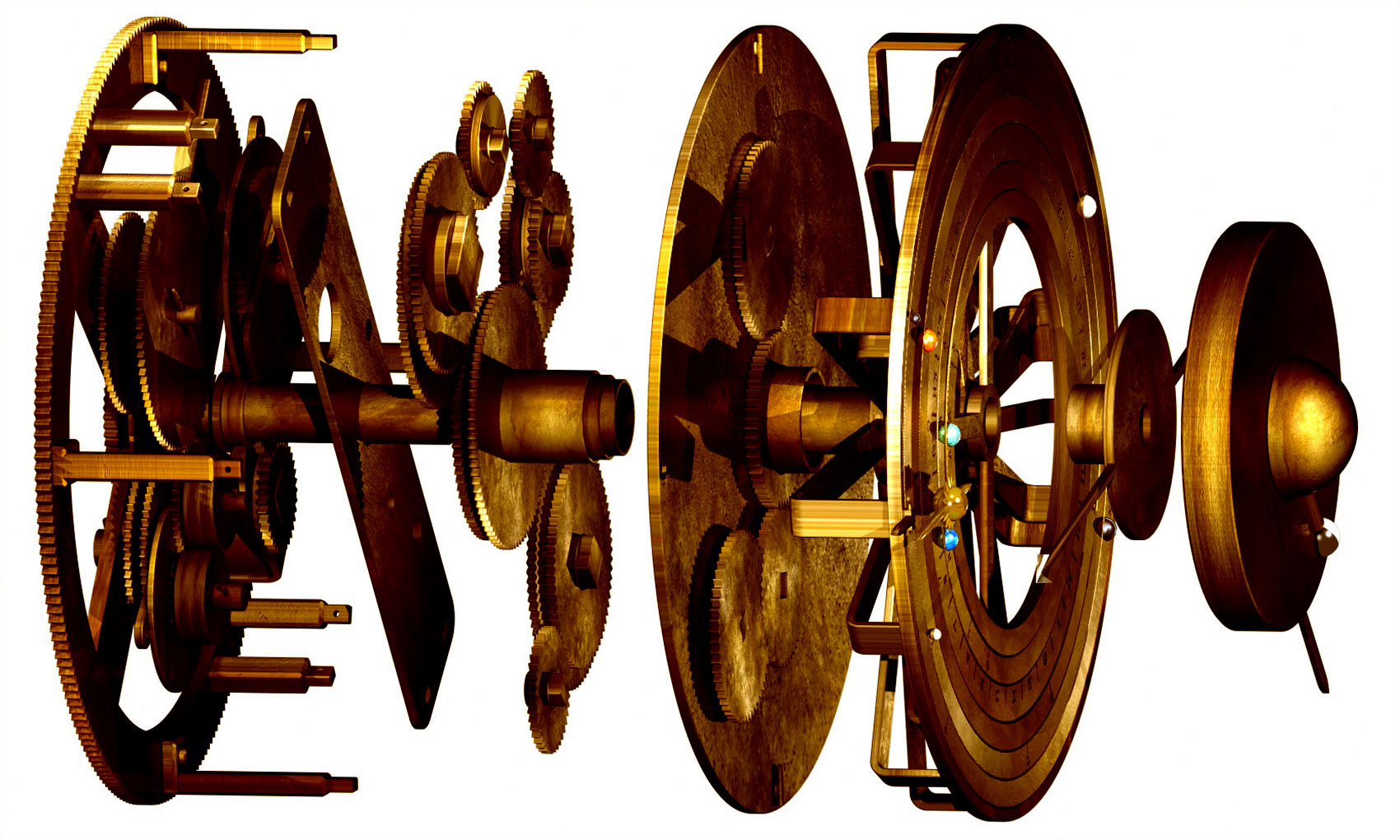 A first version of this article was published in 2011. I have to modify it to include data revealed in Science et Vie of July 3, 2024.
A first version of this article was published in 2011. I have to modify it to include data revealed in Science et Vie of July 3, 2024.
Found near Antikythera, Greece, this computer is considered the first analog calculator for calculating astronomical positions. It is a bronze mechanism comprising dozens of gears, solidary and arranged on several planes. It is filled with many Greek inscriptions, says Wikipedia, which dates back a little. Here are more recent data…
Too modern to be antique
This machine too modern to be ancient has intrigued scientists since its discovery. It is also called mechanism, computer, calculator… The modernity of the names given to him is perplexing. For me, recent progress in his analysis shows evidence: our very distant past is much more technological than we thought for a long time. And that we still believe it, and first among scientists.
Archaeology, more than other scientific disciplines, is marked by the beliefs and convictions of researchers. As such, it remains one of the scientific fields where a-priori obstacles to real discoveries. Or, when discoveries are made, and impossible to conceal, Western archaeology tries to pass them under silence because they do not fit with the current representation of our past. This is a scam.
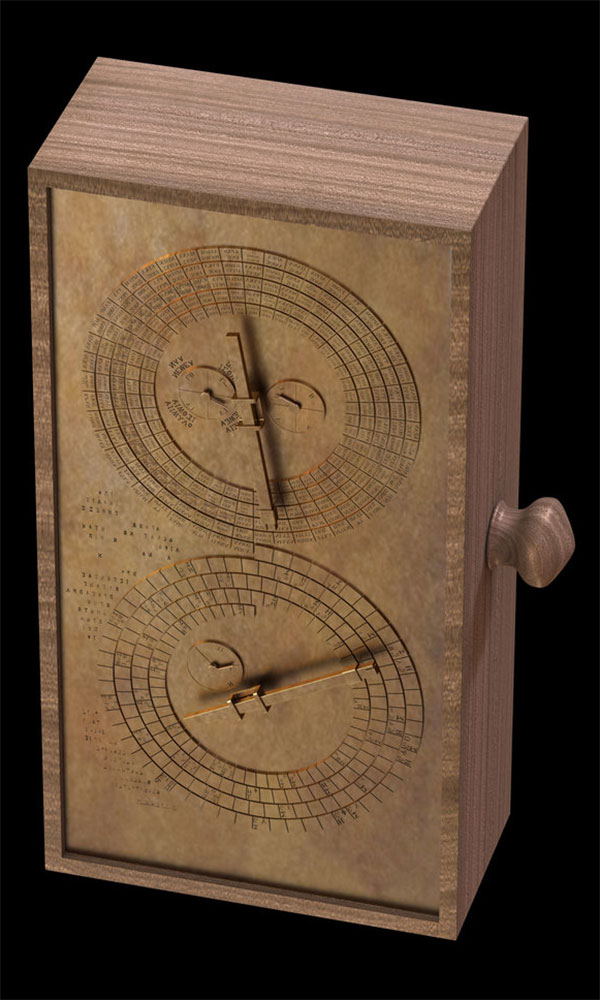 Antikythera’s calculator is a fine illustration of this: the mysterious object was first ignored, until a brave — and lucky! — exhumes it from a museum storeroom. Then science finally took an interest. And it continues thanks to the University of Glasgow.
Antikythera’s calculator is a fine illustration of this: the mysterious object was first ignored, until a brave — and lucky! — exhumes it from a museum storeroom. Then science finally took an interest. And it continues thanks to the University of Glasgow.
Sponge fishermen
The singular history of this complex machine begins at Easter 1900. A crew of sponge fishermen fled a gale and diverted to the island of Antikythera, located between Crete and the Peloponnese. Freedivers spend a few days looking for sponges on the shores of the island, while the weather improves.
They then discover a large wreck (nearly 100 meters long!) by 40 meters deep. This wreck contained several statues including the famous ephebe of Antikythera. This hollow bronze statue is an extremely rare archaeological artifact.
Back in Greece, the crew declared the discovery and the museum of Athens hastened to send a team. In view of the cargo, it is assumed that the ship was Roman, that it came from Asia Minor, perhaps from Pergamon and that it had stopped at Rhodes. The shipwreck is dated – 85, during the wars of Mithridate.
But back to Antikythera, on the underwater site where the archaeological team of Athens has just joined the divers. Contrary to expectations, the search was particularly long and costly. Several accidents were reported, including one fatal. It is by going up a marble statue representing a horse that one of the divers was killed. The statue, breaking its cables, was definitely lost.
In the cargo was a particular object. When the gangue broke, various gears and mechanisms were discovered. It was mistaken for an astrolabe and the object was forgotten in the reserves …Look like Indiana Jones!
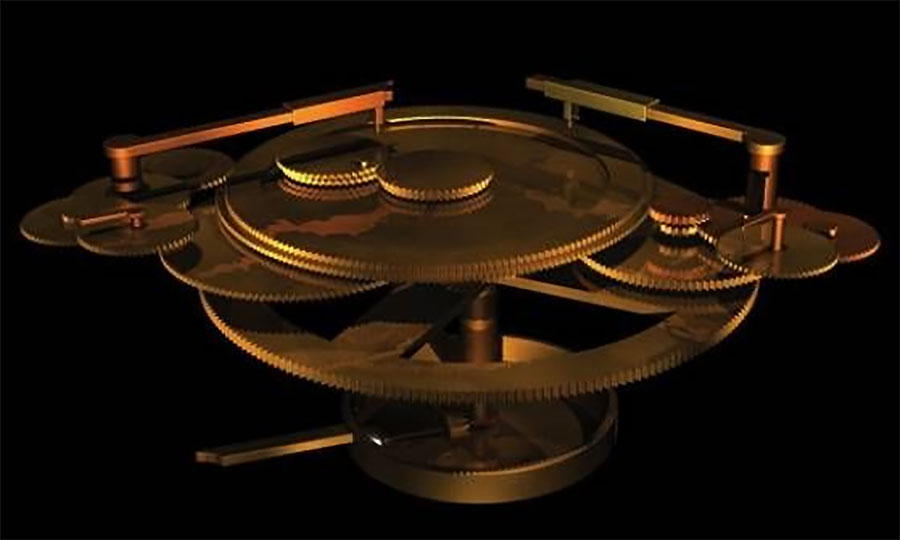
X-ray scanner
It was not until 1955 that a researcher finally became interested. Derek de Solla Price, a British academic, began a thorough study to which he devoted the rest of his life. In 1980, the Internet intensified reflection on the object.
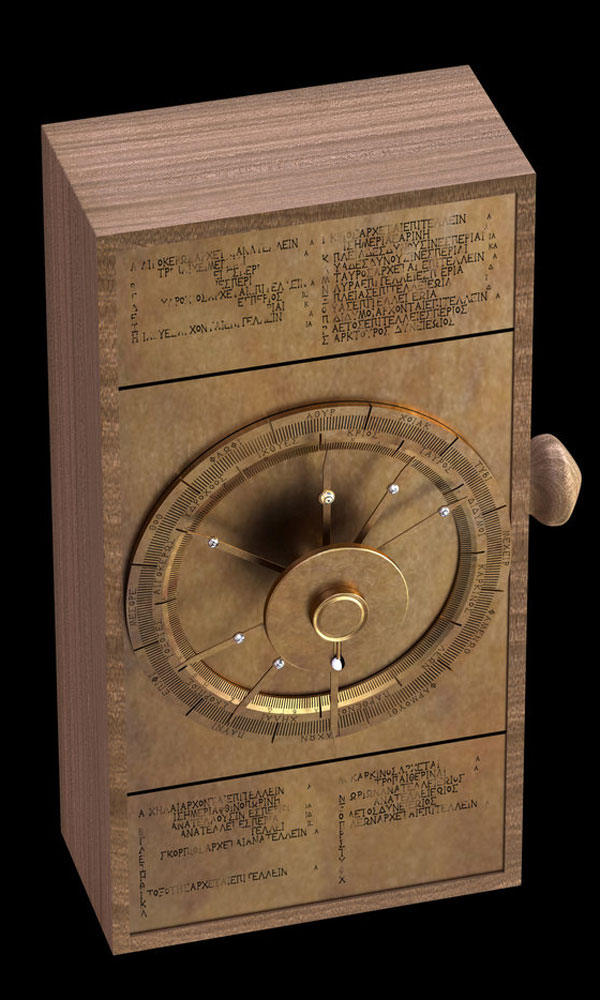
Four reconstructions were made. In 2000 the study of the calculator brings together about 150 people from several universities. The fields of application range from history to maths, geometry, astronomy, epigraphy…
The search was facilitated by the grant of an X-ray scanner capable of showing the inside of the cases without disassembly and with remarkable precision.
The Antikythera calculator comes in the form of a book, with several shutters on a case. Protected by a bronze cover, the first “page” seems to be an introduction to astronomy.
But according to research from 2024, the main function of this craft would be to capture gravitational waves.see further
Other gears and needle rails would indicate lunar, solar, eclipses, even currents and winds.
The beginning of the mechanism would be a calendar based on the Egyptian system, but the machine was indexed in duplicate, following the Greek Olympic calendar and the Egyptian calendar. (Source: Lecture by Eric Zurcher, synthesis of his thesis work.)
New advances
A first version of this article was published in 2011, containing notes posted on a first version put online in 2008. Today I have to repeat this article to include data revealed in Science et Vie of July 3, 2024.
“Researchers at the University of Glasgow have used statistical modelling techniques of gravitational waves to analyse the holes in the ring of the mechanism’s calendar. This study reveals that the ring probably contained 354 holes, corresponding to a Greek lunar calendar, highlighting the precision of the craftsmen of the time.
Techniques used by the team include Bayesian analysis and “Markov chain Monte Carlo methods” (statistical techniques used to sample complex probability distributions). These tools make it possible to quantify uncertainty based on incomplete data and provide probabilistic results.”
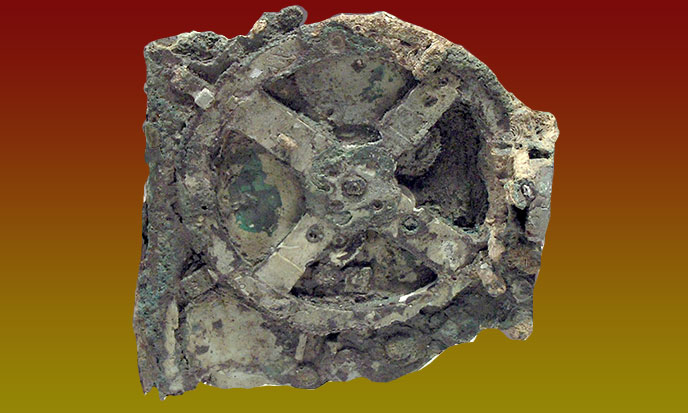
Extreme precision
“This approach revealed that the ring of the calendar probably contained 354 holes, corresponding to a Greek lunar calendar of 354 days. The results of this study were published in Horological Journal.
The precision of the holes in the ring of the calendar is particularly remarkable. The researchers found that the holes were positioned with an average radial variation of only 0.028 mm, reflecting the precision and care provided by Greek craftsmen.

For the researchers, this discovery reinforces the idea that the Antikythera mechanism was not only an astronomical tool, but also a work of advanced engineering. “We hope that our discoveries on the Antikythera mechanism, although less spectacular and supernatural than those made by Indiana Jones, will help deepen our understanding of how this remarkable device was made and used by the Greeks» concludes in a statement Graham Woan, professor at the School of Physics and Astronomy at the University of Glasgow and one of the authors of the study.” (source)
A lunar calendar
It seems obvious that this camera is not a Greek or Roman invention. It is a vestige of the planetary technology of the Pyramids civilization, which some call Atlantis. And it’s also a great insight, the door to oblivion suddenly open. It filters the beautiful light of a world always present in the secret of the heart… and in the akashic memory!
A calculator capable of giving astronomical positions of a confusing precision… A lunar calendar of 354 days… All this raises a lot of questions. Knowing astronomical data with this accuracy is only useful for space travelers. Did the ancient Greeks travel through space? I don’t think so. This machine does not date from antiquity, but from an earlier period.
It would be easy to calculate the date based on the exact length of the lunar year at this or that time. We know that in remote times the year had twelve months of 30 days, or 360 days. That is the origin of the 360° circle. This machine dates from an intermediate period when the year had already extended by several days. The astronomical data calculated by said machine could bring to this degree of precision.
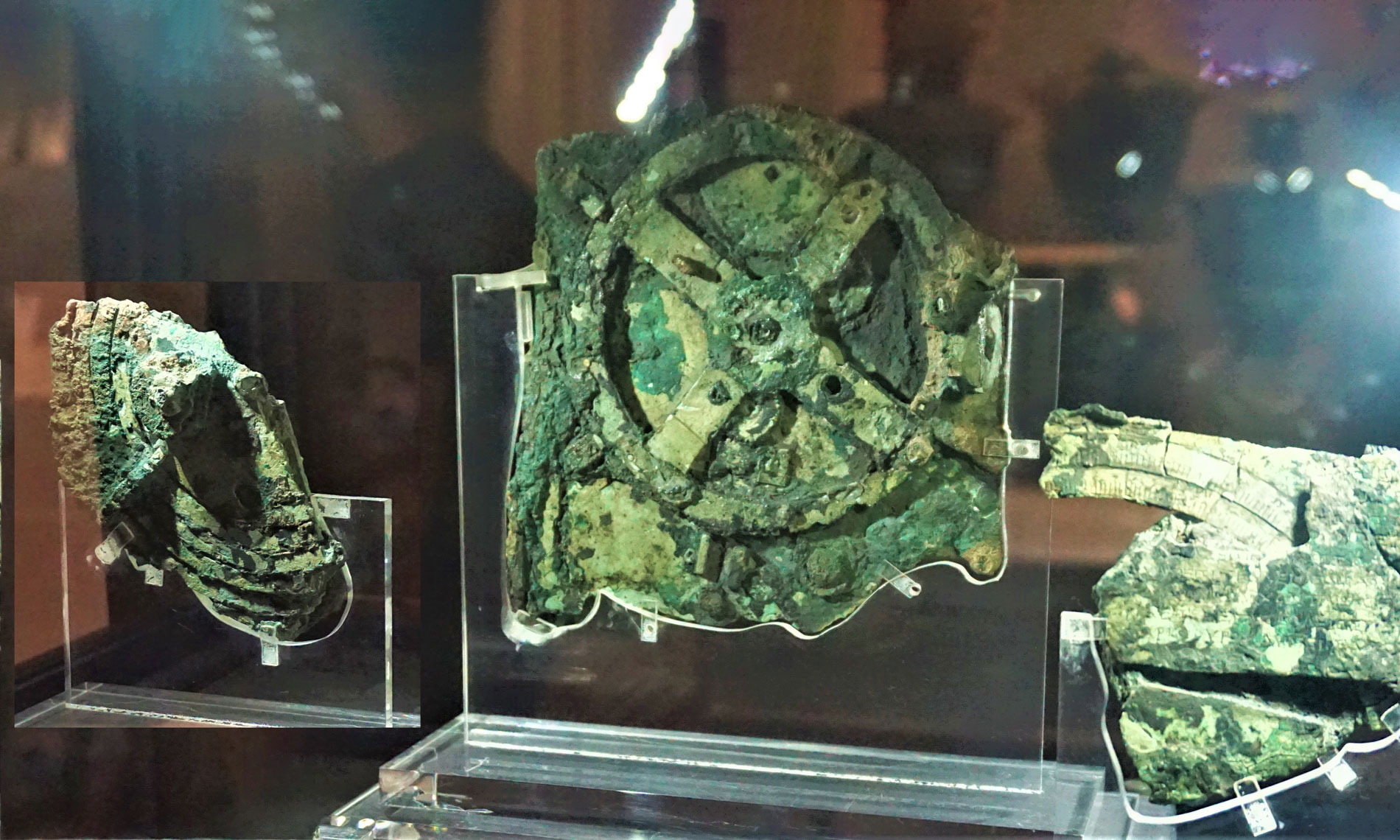
Gravitational waves
According to the very serious New York Times, the main function of this craft would be to capture gravitational waves. One touches on science fiction which is not in the future, but in the most distant past. This is the (modest!) triumph of all the thesis advanced in this site since 2008. Capture gravitational waves! The researchers from Glasgow say so.
 Quantum physics leads us to think that it could be a machine used for time travel… Albert Einstein and Niels Bohr are no longer there to see that, too bad…
Quantum physics leads us to think that it could be a machine used for time travel… Albert Einstein and Niels Bohr are no longer there to see that, too bad…
Our historians refuse to consider the existence of an advanced planetary civilization that disappeared before the dawn of our antiquity. This ignorance leads them to naive judgments and inevitably truncated analyses. The case of Antikythera’s computer only confirms what I already knew.
Goddess Techne
“For the Greeks, Mechanics is a branch of Technology, a gift of the goddess Techne. The triumph of technology allows man to dominate nature. Sources claim that Archimedes built a complex mechanics, a planetarium. The innovation lies in a system of redistribution of the movement called differential. This decisive invention –more or less forgotten until Leonardo da Vinci– was nevertheless included in the computeur of Antikythera. By acquiring this type of machine, every Roman aristocrat ensured an exceptional social reputation.
It is therefore possible that this mechanism is the product of an order. But it seems more likely that it is, like the cargo, the spoils of looting after a military victory. Originally the machine gave the date, the movement of the sky, the direction of the winds, their intensity, their period (some winds have long been assimilated to certain lunar phases). Technology and science are not unique to our centuries. The computer of Antikythera demonstrates it: men quickly asked themselves important questions concerning astronomy in particular.
The civilizations that preceded us have acquired a certain degree of knowledge, with limited means. The Antikythera computer demonstrates the breadth of Greek knowledge in astronomy, mathematics, geometry, craftsmanship and cultural refinement.” (Eric Zurcher)
Devastating assumptions
The researcher Eric Zurcher gave a synthesis of his work of memory, himself having led to a publication. This excerpt summarizes the knowledge gained on this complex calculator. The conclusions of the speaker are in line with the current dominant thinking, so we will not blame the author, who follows the herd.
It is no less painful to hear about the Greeks or the Romans: “Men quickly asked themselves important questions“. Quickly! Like the Greeks or Romans just got off the banana tree!
This knowledge was not born with the Greeks. As in the case of the so-called Pythagoras theorem, this is certainly prior knowledge transmitted by the Greeks. If this knowledge were contemporary with the Greeks, the mechanics of Antikythera would not be a single object. The Greeks, like the Egyptians, are heirs to a very long period of science and civilization. Many of us already know this, but science still ignores — or pretend to.
“The Black ignores that his ancestors, who adapted to the material conditions of the Nile Valley, are the oldest guides of humanity on the path of civilization”
Zurcher adds: “The civilizations that preceded us have acquired a certain degree of knowledge, with limited means.”
This is unfair and totally absurd. Everything happens as if scientific or technological progress followed a regular curve from the ignorance of the Cromagnons to the breathtaking knowledge of contemporary scientists. What nonsense!

Antiquity in decline
If the Greeks or the Romans had many limited means, the Franks or the Goths of the Middle Ages had even more limited means. In Greco-Latin antiquity, the use of glass for windows was known, houses had running water and underfloor heating. There were hot baths and toilets.
It is through centuries and so-called barbaric invasions that this comfort and technology have disappeared. It only takes a period of barbarism to erase centuries of progress. Ancient Greek medicine was probably more effective than that of the physicistsie doctors of Molière.
On the other hand, if we go back two or three thousand years before Ancient Greece, we discover a surgery comparable to ours. The innumerable trepanations of the Neolithic are the formal proof of this. The same goes for the very common cataract surgery in ancient Egypt.
Neolithic technology
And it is understood that Greco-Latin antiquity was in decline compared to earlier periods. Everything happens as if technology and know-how had only decreased over the millennia, until the 17th century, where a new era opens: the goddess Techné is finally back.
 This led us to believe in the silly myth of growing progress. It is shrinking, on the contrary. The vector of progress must be reversed, as many visionaries have already understood.
This led us to believe in the silly myth of growing progress. It is shrinking, on the contrary. The vector of progress must be reversed, as many visionaries have already understood.
We were created, educated, developed by a race from elsewhere, whose skills still prodigiously exceed ours. When will we be able to terraform a wild planet, as they did for Terra?
Everyone knows Star Wars, a masterpiece by George Lukas whose sequel, alas, is massacred on the channel by Disney productions with a D like Dollar. In 1977, Lukas struggled to find capital for his project. Too visionary, too incredible, too megalomaniac for the time. No producer wanted to risk a kopeck on this nonsense… which has been successful as we know.
Remember the very first image. Against the backdrop of starry space, a text goes up under as if to overwhelm us. What does this incredible text say? “A very long time ago…” etc. Yes, the wars of the Black Star took place in the depths of an immemorial past. The public accepts the obvious. Artists have known this for a long time. Everyone agrees… except the specialists of the past who cling to their chimeras. It’s petty. So outdated!
The lens of Nemrod
Other findings clearly show that technology is a very old reality. “Ancient knowledge was much more refined and developed than what we have learned so far. From electric batteries to planispheres, an assortment of gadgets were exhumed by excavations.
The two most notable finds were the Nemrod lens and the famous Antikythera mechanism. The ancient 3,000-year-old Nemrod objective was discovered in Nemrod Palace, Iraq. Some experts believe that the lens was part of an ancient telescope of the Babylonians, hence their in-depth knowledge of astronomy. And the famous Antikythera mechanism (200 BCE before the common era) was created to calculate the movements of the sun, moon and planets, in order to predict celestial events. Unfortunately, we can only speculate on the origin of these devices. Who created them? How were they used? Why did this ancient knowledge present for millennia disappear afterwards?” (source)

In the mists of time
Seen from this angle, the Antikythera calculator is not the work of a brilliant craftsman of the 1st millennium BCE. The craftsman, very skillful, would have been only the copyist of a much older mechanism, itself copied from another, etc. This is how the famous portulans of the Turkish admiral Piri Reis were transmitted to us. Metal, like paper, degrades with the years. Zealous copyists have been regularly asked to reproduce knowledge that is lost in the mists of time.
We have seen how the ancient Greeks, heirs of knowledge that far exceeded their level of understanding, were led to errors of interpretation sometimes very funny, like the myth of the cave of Plato. As long as history persists in denying the obvious, we will continue to ignore millennia of human adventure. Why do intellectuals have to be so stupid? No question: it’s called kaliyuga.
Ancient Technology
- High Tech Prehistory
- Secret History Of Ancient Aircrafts
- Ancient Energy
- Perpetual Lamps
- The Meaning Of Tao
- Vimana, ancient UFO?
- Vimanas And Antigravity
- A Prehistoric UFO
- The Tower Of Babel
- The Spaceship Of Babel
- Baalbek Spaceport
- The Giants of Lachish
- Ancient Robots
- Triskell And Handspinner
- What Lack Of Evidence?
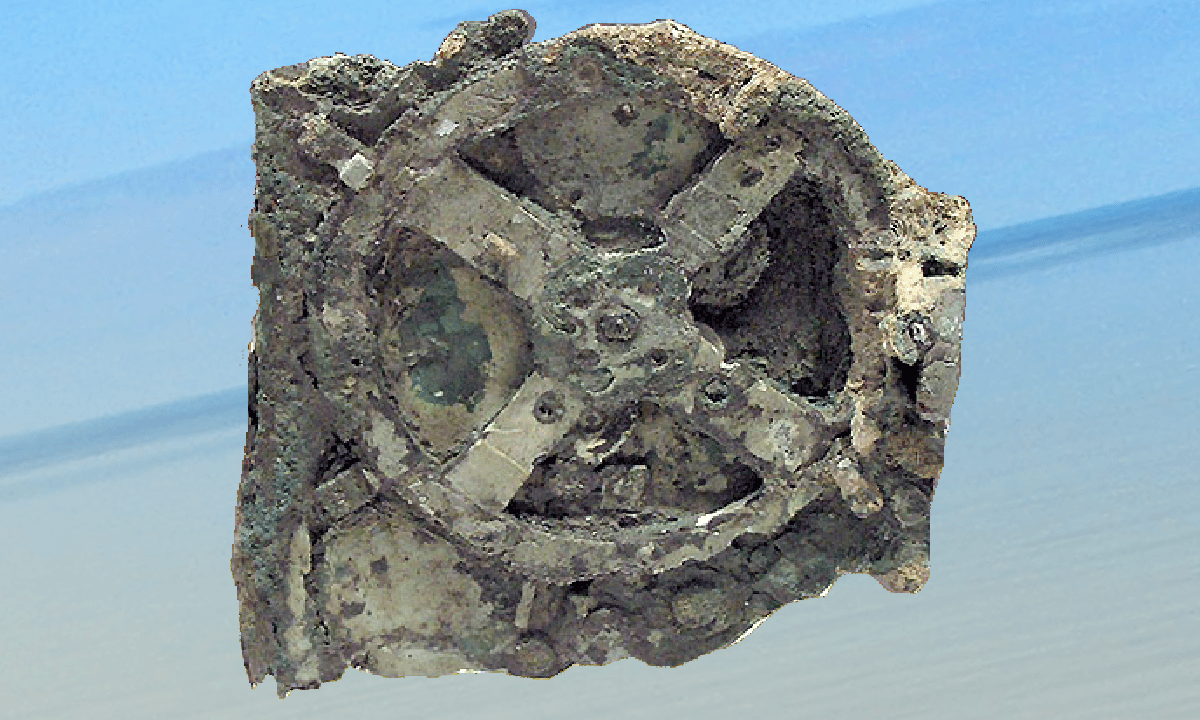
New Archaeology
- Bosnia: Pyramid Of The Sun
- Bosnia: Osmanagic Adventure
- Bosnia: Visoko Pyramids
- Bosnia: The Ravne Tunnel
- Dark Forest
- Strange Rocks At Fontainebleau
- Wiltshire Crop Circles
- Bermuda’s Triangle
- Devil’s Sea, Japan
- The Two Mounts Thabor
- Teotihuacan Mercury
- The Stones Of Puma Punku
- The Deep Mystery Of Stones
- Soft Stones
- Flying Stones

Our historians refuse to consider the existence of an advanced global civilization disappeared before the dawn of our antiquity.
This ignorance leads to naive judgments and zero analysis. The case of the Antikythera PC confirms this.
For the Greeks, mechanics is a branch of technology, gift of the goddess Techné. The triumph of technology allows man to dominate nature. Sources claim that Archimedes had constructed a complex mechanism, a planetarium. The innovation lay in a system of redistribution of movement called differential. This determining invention, that was more or less forgotten until Leonardo da Vinci, was nevertheless included in The Antikythera Computer. By acquiring this type of machine, every Roman aristocrat ensured exceptional reputation and social outstanding.
Therefore it is possible that this mechanism was the product of an order. But it seems more likely to be, as well as the cargo, the spoils of a plundering after a military victory. In this case, its origin and age remain unknown. Originally the machine gave the day, the movement of the sky but also the winds direction, their intensity, their period: winds had long been associated to lunar phases. Technology and science below are not fields specific to our centuries. The Antikythera Computer is the evidence: men quickly raised important questions, especially astronomy.
The civilizations that have preceded us had acquired a certain degree of knowledge, with limited means The Antikythera Computer shows the extent of the Greek knowledgeOr prior knowledge transmitted by the Greeks. in astronomy, mathematics, geometry, crafts and cultural refinement. (source)This conference of Eric Zurcher is a summary of his thesis work, which itself resulted in a publication. These excerpts from a “scientific”I pity this kind of science! conference summarize the current knowledge about this complex calculator. The findings of the lecturer are directly in line with the current mainstream thinking, so we won’t hold it against the author, who was saying what everyone said.
However it is painful to hear about the Greeks or the Romans: “Men quickly raised important questions“ Quickly! As if they just came down the banana trees! This knowledge was not born with the Greeks.
As in the case of the theorem of Pythagoras, it was certainly prior knowledge transmitted by the Greeks. If this mechanical knowledge were contemporary of the ancient Greeks, Antikythera computer would not be a single object. Like the ancient Egyptians, the ancient Greeks are the inheritors of a very long period of science and civilization. Many of us already know, but shocked science still refuse evidence.
The author adds: “The civilizations that have preceded us acquired a certain degree of knowledge, with limited means.” If the Greeks or the Romans had limited means, the Franks and Goths in the Middle Ages had far more limited means then. Where is the progress in this case? Greco-Roman antiquity used glass for windows ; houses had running water, underfloor heating, hot baths and toilets.
This is over the centuries and barbaric invasions that comfort and technology have disappeared. Just a period of barbarism to erase centuries of progress. Ancient Greek medicine was probably more powerful than that of the physiciansdoctors of Moliere. On the other hand, if you go back two or three thousand years before the ancient Greeks, you will find a medicine and surgery comparable to ours. The countless Neolithic trepanations clearly demonstrate. It looks as both technology and know-how had steadily decreased over the millennia, until the 17th century, when finally started a new technological era. At long last !
Many other findings clearly show that technology is a very ancient reality. “Ancient knowledge was a lot more refined and developed than we have been taught hitherto. From batteries to planispheres, an assortment of gadgets have been excavated and found.
Two notable finds were the Nimrud lens and the famous Antikythera Mechanism. The 3,000 year old Nimrud lens was discovered at the palace of Nimrud, in Iraq. Some experts believe the lens was part of an ancient telescope the Babylonians used, hence their advanced knowledge of astronomy.
And the famous Antikythera Mechanism (200 BC.) was created to calculate the movements of the sun, moon and planets to predict celestial events. Unfortunately, we can only speculate on the ways many of these devices were created, used and why the ancient knowledge pertaining to them disappeared for millennia afterwards.” (source)
Seen in this light, the Antikythera Computer is not the work of a brilliant craftsman of the first millennium BC. The craftsman, very clever, would have been the copyist of a much older mechanics, itself copied from another, etc..

Thus the famous portolans of Admiral Piri Reis of Turkey have been passed down to us. Metal, such as paper, deteriorates with age. Zealous scribes, skilled craftsmen have been regularly asked to reproduce knowledge that get lost in the mists of time. We have seen how the ancient Greeks, inheritors of very ancient knowledge that far exceeded their level of understanding, were led to very comical misinterpretation sometimes, as the myth of Plato’s cave.
As history persists in denying the evidence, we will continue to ignore thousands of years of human adventure. Why must intellectuals be so stupid? Simple enough: it’s called Kaliyuga.


